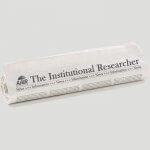As reported in the last newsletter, the 2017 SIG Forum was a great success, but what are the SIGs and what happens in these groups? A SIG is a special interest group organised around a particular topic or functional area of mutual interest where members of the group discuss topical issues, produce solutions, or just share knowledge. Apparently, the term was first used in 1961 by the Association for Computing Machinery, which is ‘an international learned society for computing’ that was founded in 1947 – or so says Wikipedia.
For AAIR, our SIGS have evolved over time, and we have the following active SIGs:
- Data Warehousing, Business Intelligence and Analytics
- Load Management
- Government Reporting
- Surveys and Evaluations
Each AAIR SIG is organised and lead by an AAIR member.
From time to time, various members of the organisation have proposed new SIGs – a notable example was the establishment of the Load Management SIG, which was spearheaded by Jeff Holmes (who was at the time at QUT). I vividly remember the early stages of the Load Management SIG, as it coincided with my first involvement with AAIR back around 2009.
We have also talked about the possibility of a Benchmarking and Ranking SIG, and a Quality Assurance SIG, but we haven’t yet progressed these too far. As a not-for-profit organisation run primarily by volunteers, we rely on the support of members to take on some of these tasks and offer these services to our members. It is therefore not through lack of interest, but most people just don’t have the time to devote to what is needed to run a SIG. But you don’t have to do it on your own, as there may be others who would also be interested and enthusiastic. So consider being involved and working with some colleagues to help yourself and others to share and gain knowledge.
If you’re interested in coordinating either the Benchmarking and Ranking SIG or the Quality Assurance SIG and getting them off the ground, please contact our Vice President, Don Johnston by email to don.johnston@scu.edu.au.
I would like to take this opportunity to thank our outgoing SIG Coordinator, Michael Cudmore (Load Management). Thank you for stepping up and embracing the opportunity to increase your involvement with your professional association.
If you aren’t part of a SIG but think you might like to be involved, or you just want some more information, please visit the SIG page on our website and sign up to our SIG mailing list.
If you see any gaps in the represented SIG topics, and you’d like to propose a new SIG that we haven’t covered, please do not hesitate to get in touch with either me or Don Johnston. We can support you in establishing a new group by offering you advice and assistance to get it off the ground.


